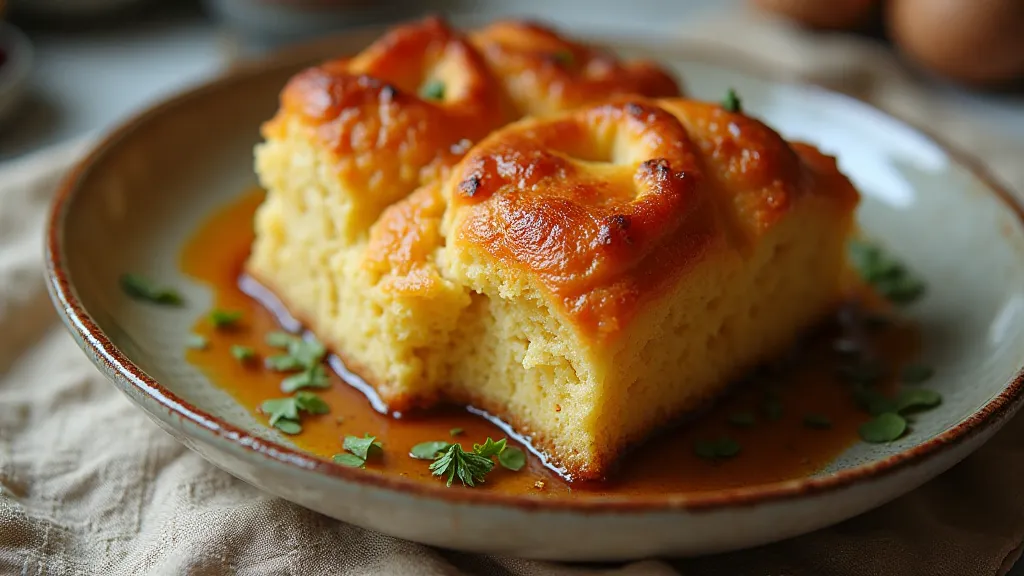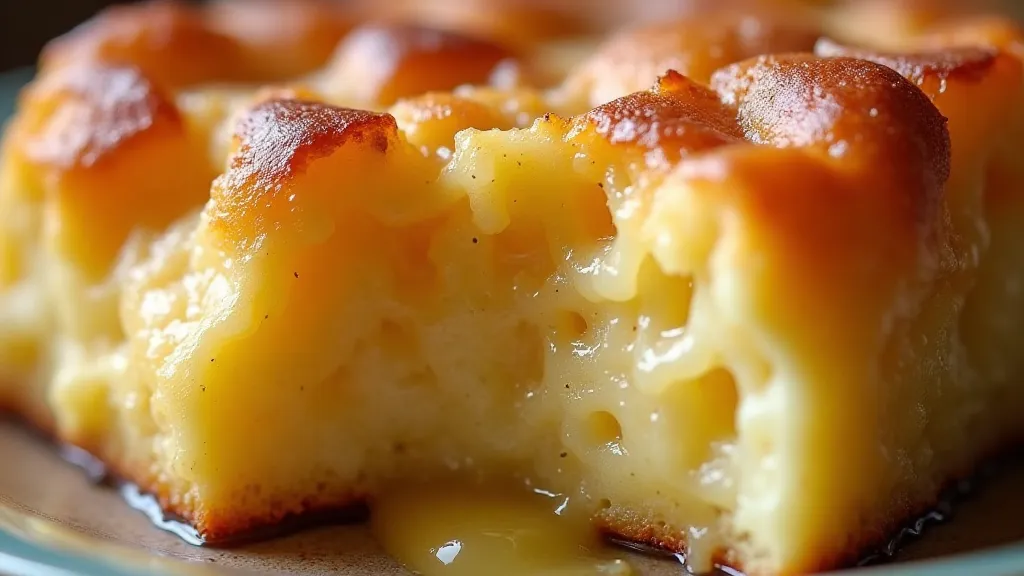Bread Pudding: Transforming Stale Bread into a Sweet Treat
Discover the magic of Bread Pudding, a resourceful solution to avoid wasting stale bread during the Great Depression. Learn the classic recipe and understand the ingenuity behind this comforting dessert.
The Essence of Frugal Baking in the 1930s
During the Great Depression, nothing was wasted. Resourcefulness was a necessity, not a virtue. Families stretched every dollar and every ingredient as far as possible. Bread, a staple food, often went stale before it could be entirely consumed. Throwing it away was unthinkable! This is where bread pudding emerged as a culinary lifeline.
Bread pudding wasn't just a dessert; it was a testament to the ingenuity of home cooks. It was a way to transform something seemingly useless into a delicious and satisfying treat for the whole family. It required minimal ingredients – most of which were likely already on hand – and offered a warm, comforting end to a often austere meal. The constraints of the era pushed families to innovate, finding ways to create satisfying meals from limited resources. Many dishes, like Bread Pudding, arose from this spirit of resourcefulness, mirroring solutions found in meals such as Water Pie, another testament to how creativity could flourish even in times of scarcity.
The Classic Great Depression Bread Pudding Recipe
This recipe is based on those used during the 1930s, prioritizing simple ingredients and a focus on minimizing waste. It’s a perfect example of how families made the most of what they had.
Ingredients:
- 6-8 cups stale bread, cut into cubes (day-old or even older is perfect!
- 2 cups milk (whole or skim, whatever was available)
- 1/2 cup sugar
- 2 eggs
- 1 teaspoon vanilla extract (if available, otherwise omit)
- 1/4 teaspoon salt
- Pinch of nutmeg (optional)
Instructions:
- Preheat your oven to 350°F (175°C). Grease a 9x13 inch baking dish.
- In a large bowl, whisk together the milk, sugar, eggs, vanilla extract (if using), and salt.
- Add the bread cubes to the bowl and gently press them down into the milk mixture, ensuring they are well soaked. Let the bread soak for at least 15-20 minutes – longer is even better!
- Pour the bread mixture into the greased baking dish.
- Bake for 35-45 minutes, or until the pudding is set and the top is golden brown. A toothpick inserted into the center should come out clean (or with just a few moist crumbs).
- Let cool slightly before serving. Enjoy warm!

Variations & Resourcefulness
Like all Great Depression recipes, this one was incredibly adaptable. Families often modified it based on what they had on hand. The principles of using what's available extended to main courses as well, much like the creative solutions used in dishes like Macaroni and Cheese, which demonstrated how comfort food could be achieved on a tight budget.
- Dried Fruit: If available, dried raisins, currents, or chopped dates added a touch of sweetness and texture.
- Spices: Cinnamon, cloves, or allspice were used when available.
- Nuts: Chopped nuts, like walnuts or pecans (if accessible) added richness and crunch.
- Simple Sauce: A simple sauce made with milk, sugar, and a little butter could be drizzled over the bread pudding for extra decadence.

Beyond Dessert: The Role of Bread Pudding in Daily Life
The Great Depression era was defined by both hardship and ingenuity. Families learned to navigate incredibly challenging circumstances with a remarkable level of resourcefulness. While dessert might seem like a small luxury, even simple treats like Bread Pudding offered a much-needed moment of comfort and joy in an often difficult time. It wasn's solely a dessert; it was a symbol of hope and resilience.
The importance of resourcefulness went beyond the kitchen as well. Families often had to find creative solutions to everyday problems, adapting and improvising to make do with limited resources. Preparing a meal like bread pudding wasn’t simply about making a delicious dessert; it was a practical demonstration of this spirit of resilience. Just as families stretched ingredients to create filling meals, they also adapted and improvised in other aspects of their lives. The ability to turn something seemingly worthless, like stale bread, into a delectable treat highlights the essence of that ingenuity - a skill needed for survival and a source of unexpected joy. Consider the same principle applied to leftovers, truly understanding the magic of transforming loss into sustenance.
Understanding the Economics of Bread Pudding
To truly appreciate Bread Pudding, it's helpful to understand the economic realities of the Great Depression. The prices of everyday goods soared, while wages plummeted. Families had to be incredibly careful about how they spent their money, and waste was simply not an option. Bread, a relatively inexpensive and filling food, became a cornerstone of many diets. When it went stale, however, throwing it away was unthinkable.
The ingredients in a classic Bread Pudding recipe – milk, eggs, sugar – while seemingly simple today, represented a significant expenditure for many families during the 1930s. Therefore, utilizing every part of the bread, even when it was past its prime, was a matter of necessity, not just a matter of thrift. Families were masters of improvisation, drawing upon their collective wisdom to make the most of a challenging situation. The scarcity of ingredients often led to creative culinary shortcuts - techniques honed by necessity and passed down through generations.
The Psychology of Comfort Food During Hard Times
Beyond the practical considerations of resourcefulness, bread pudding, and similar dishes, held a deeper psychological significance. In times of widespread hardship and uncertainty, a warm, comforting dessert provided a moment of respite and normalcy. It was a small but meaningful reminder of the simple pleasures in life, a beacon of hope in a landscape of adversity.
The act of baking itself, the familiar scent of vanilla and cinnamon filling the kitchen, could be therapeutic, offering a sense of control and purpose in a world that often felt chaotic. Sharing a simple dessert with loved ones fostered a sense of community and connection, reinforcing the bonds that sustained families through difficult times. It wasn't merely about satisfying hunger; it was about nourishing the soul.
Modern Adaptations and Appreciation
Today, Bread Pudding remains a beloved dessert, enjoyed for its comforting flavor and rustic charm. While modern bakers often have access to a wider range of ingredients and equipment, the spirit of resourcefulness that inspired the original recipe still resonates. Many contemporary cooks appreciate the simplicity and affordability of Bread Pudding, and often experiment with different flavor combinations and variations.
The legacy of Bread Pudding extends beyond the kitchen, serving as a reminder of the resilience and ingenuity of the Great Depression generation. It’s a testament to the power of simple ingredients and creative problem-solving, and a symbol of hope and perseverance in the face of adversity. Making Bread Pudding today can be a way to connect with history, to appreciate the sacrifices and resourcefulness of those who came before us, and to celebrate the enduring power of simple, comforting food.






